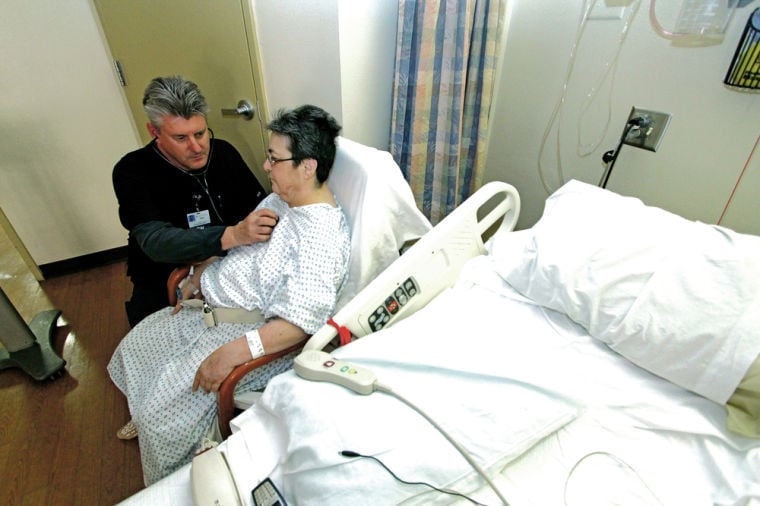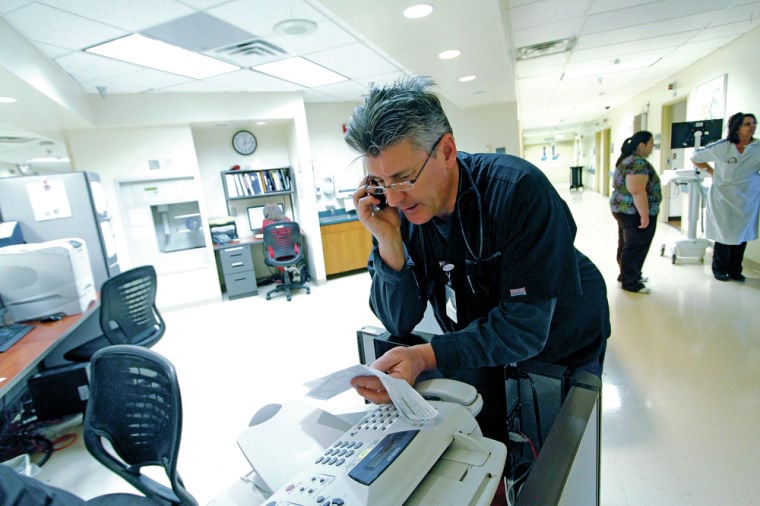
In 2005, the New York Times published an editorial by Teri Mills, RN, MS, CNE, president of the National Nursing Network Organization (NNNO), calling for the appointment of a national nurse leader who would promote awareness of public health issues. Since then, the NNNO and its supporters have waged a campaign to bring the matter to the attention of nurses, the general public and members of Congress. Could you be a lobbyist?
The United States Public Health Service has had a chief nurse officer (CNO) for decades, working within the Office of the Surgeon General. However, the CNO has largely remained outside the limelight and is mostly unknown to both the public and the more than 3 million nurses currently licensed in this country.
On Feb. 4, 2013, with the strong support of Reps. Eddie Bernice Johnson (D-Texas) and Peter King (R-N.Y.), the National Nurse Act of 2013 was officially introduced to the House of Representatives as H.R. 485.
Johnson, who describes herself as “the first registered nurse in Congress,” explained in an email statement that H.R. 485 would designate the chief nurse officer of the U.S. Public Health Service as the national nurse for public health in order to elevate the visibility of nurses.
A NATIONAL MEGAPHONE
The national nurse, Johnson said, would collaborate with the surgeon general to address national health priorities and would serve as a national spokesperson to engage nurses in leadership opportunities and community prevention efforts.
Under H.R. 485, the national nurse for public health would continue to serve simultaneously as the CNO. However, in his or her new capacity, the national nurse would be a much more public figure than past CNOs, acting as a resource for public health guidance, promoting media campaigns and outreach and garnering support from both healthcare professionals and the general public for public health initiatives.
OFFERING INSPIRATION
According to Mills, a major goal of the bill is for the national nurse to serve as a source of encouragement, inspiration and professional direction for nurses.
At a time when this most trusted of American professions struggles with nursing shortages and other challenges, placing a high-profile nurse in such a leadership role could inspire nurses to make positive career choices, including expanded volunteerism and involvement in community prevention efforts.
“We want the position to be more visible,” says Mills, “because we really believe that nurses, encouraged by a prominent national nurse for public health, will mobilize to carry messages of prevention forward.” Nurses, she adds, are well positioned to reach everyday Americans with meaningful health messages and in times of public health crises and disasters, nurse expert opinion and commentary in the media would provide a “welcome and trusted authoritative voice.”
LOCAL NURSES ARE ONBOARD
According to Susan Sullivan, a retired public health nurse living in Southern California and the secretary of NNNO’s board of directors, many California nurses are strongly in favor of establishing a national nurse. She explains, “We see the logic in creating a prominent nurse leader whose national visibility will serve to encourage collaboration and community support for meaningful prevention initiatives.”
She says the national nurse could also play an important role in encouraging and inspiring California nurses to connect with their community’s diverse populations to promote better health outcomes. The national nurse will be a widely recognized public health advocate, a nurse who will have the backing of Congress to take action. “Having this sort of leadership at the national level will produce results.”
Email Susan Sullivan at susansphn@aol.com to arrange a conference call or a conference speaker.
NO PLAYING POLITICS
One concern that has arisen about expanding the CNO’s role in this manner is the possibility of turning the position into a political one. Mills maintains that the public health service, like the military, must remain nonpartisan and not take any public stand on legislation or elections.
The supporters of H.R. 485 have had constructive discussions on that subject with representatives of the surgeon general’s office, resulting in several revisions to the language of the bill.
A CALL TO ACTION
As of this writing, the bill has received bipartisan support from more than 35 members of Congress and further co-sponsorship is being actively sought. The bill’s sponsors hope it will make its way through the political process and pass during the current session.
If you are interested in learning more about this initiative and supporting the bill’s passage through Congress, visit the NNNO website, www.nationalnurse.org.
The website includes links to sign up for the campaign’s newsletter, make financial contributions and contact members of the NNNO, as well as opportunities to join the advocacy team and travel to Washington, D.C., as part of the lobbying effort.
The organization can assist you in contacting your representatives, including providing sample phone scripts or letters to mail or email. For a donation of $20, the advocacy team will also deliver an information packet on H.R. 485 to your congressional representative on your behalf.
------
“Having a national nurse for public health join with the surgeon general will make it possible to expand health promotion and disease prevention efforts in our communities. That’s why I’m a proud co-sponsor of the National Nurse Act of 2013.”
— Congresswoman Linda T. Sánchez (D-Calif.)
------
 Nurse Turns Lobbyist
Nurse Turns Lobbyist
You don’t need to be political to be involved
In early February, Audrey Bayer, RN, BSN, of Lambertville, N.J., learned that her congressional representative, Leonard Lance (R-N.J.), would be holding mobile office hours near her home.
Although she says she is not “a political person,” Bayer contacted Teri Mills of the National Nursing Network Organization and decided to bring the National Nurse Act (H.R. 485) to Lance’s attention.
“Of course I was nervous,” says Bayer, “since I had never met a person from Congress before. But I felt that this was my moment! He responded in a positive manner, accepting the information I provided, both written and verbal.”
Bayer, who is now in her sixth year as a nurse, says she became interested in the national nurse for public health campaign during her final BSN class at Pennsylvania’s Immaculata University, from which she graduated in January. “Teri got in touch with me and I joined the advocacy team,” Bayer explains.
Our new nurse lobbyist plans to follow up with Lance and other lawmakers about H.R. 485 over the course of the current legislative session.
Source: Working Nurse




 d Koch paused in front of hospital room 3209 when he noticed a patient he had discharged moments earlier passing by on his way home. Koch, holding an IV bag in one hand, reached out with his other to shake the patient’s hand.
d Koch paused in front of hospital room 3209 when he noticed a patient he had discharged moments earlier passing by on his way home. Koch, holding an IV bag in one hand, reached out with his other to shake the patient’s hand. great strain on their education while they are here,” she said.
great strain on their education while they are here,” she said. As of early April, you can walk into
As of early April, you can walk into  nurses who treated them one week ago. They did their jobs as they were trained to do, putting their own fears in a box during their 12-hour shifts so they could better comfort their patients.
nurses who treated them one week ago. They did their jobs as they were trained to do, putting their own fears in a box during their 12-hour shifts so they could better comfort their patients. ramingham is part of the Partners Healthcare group.
ramingham is part of the Partners Healthcare group. 